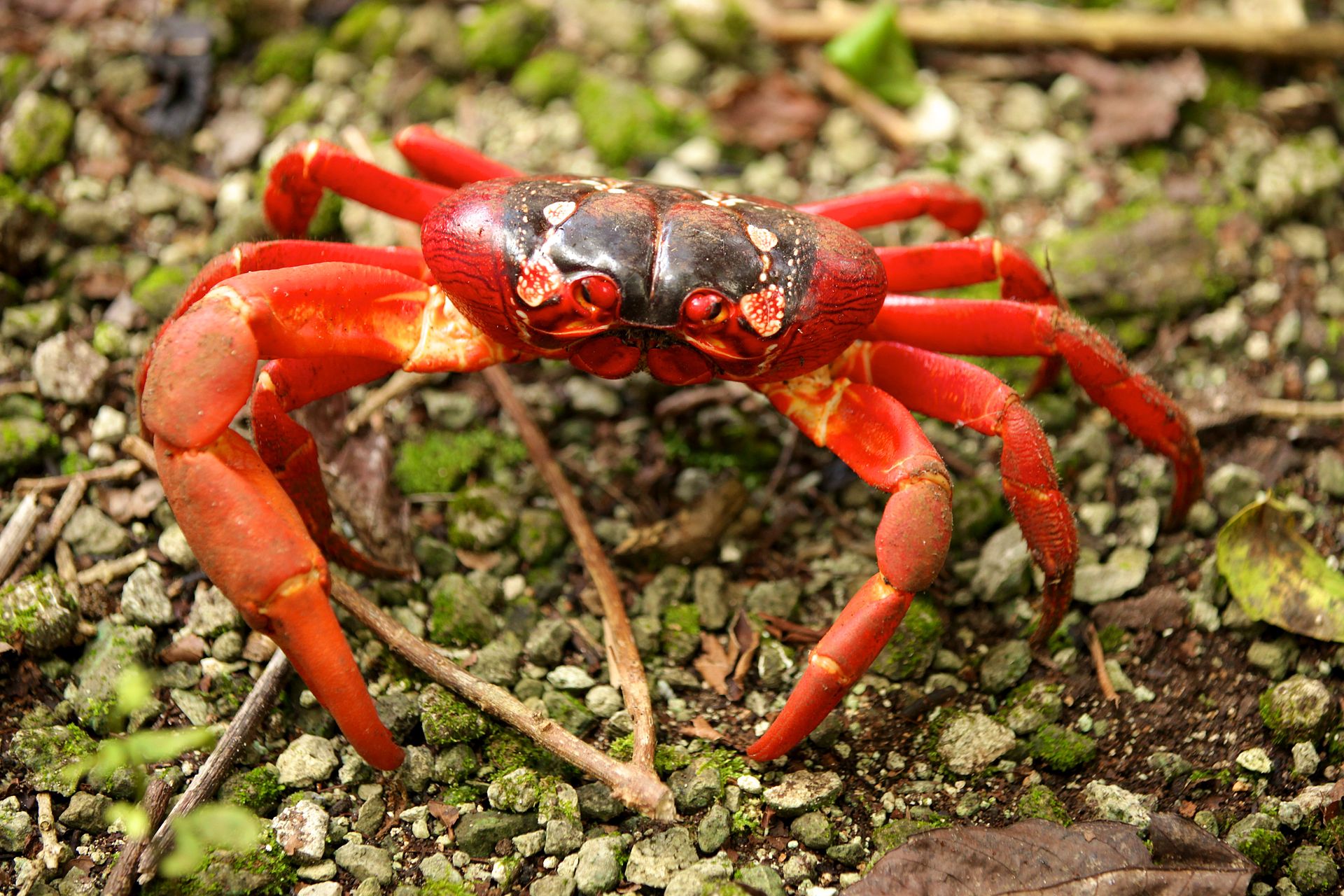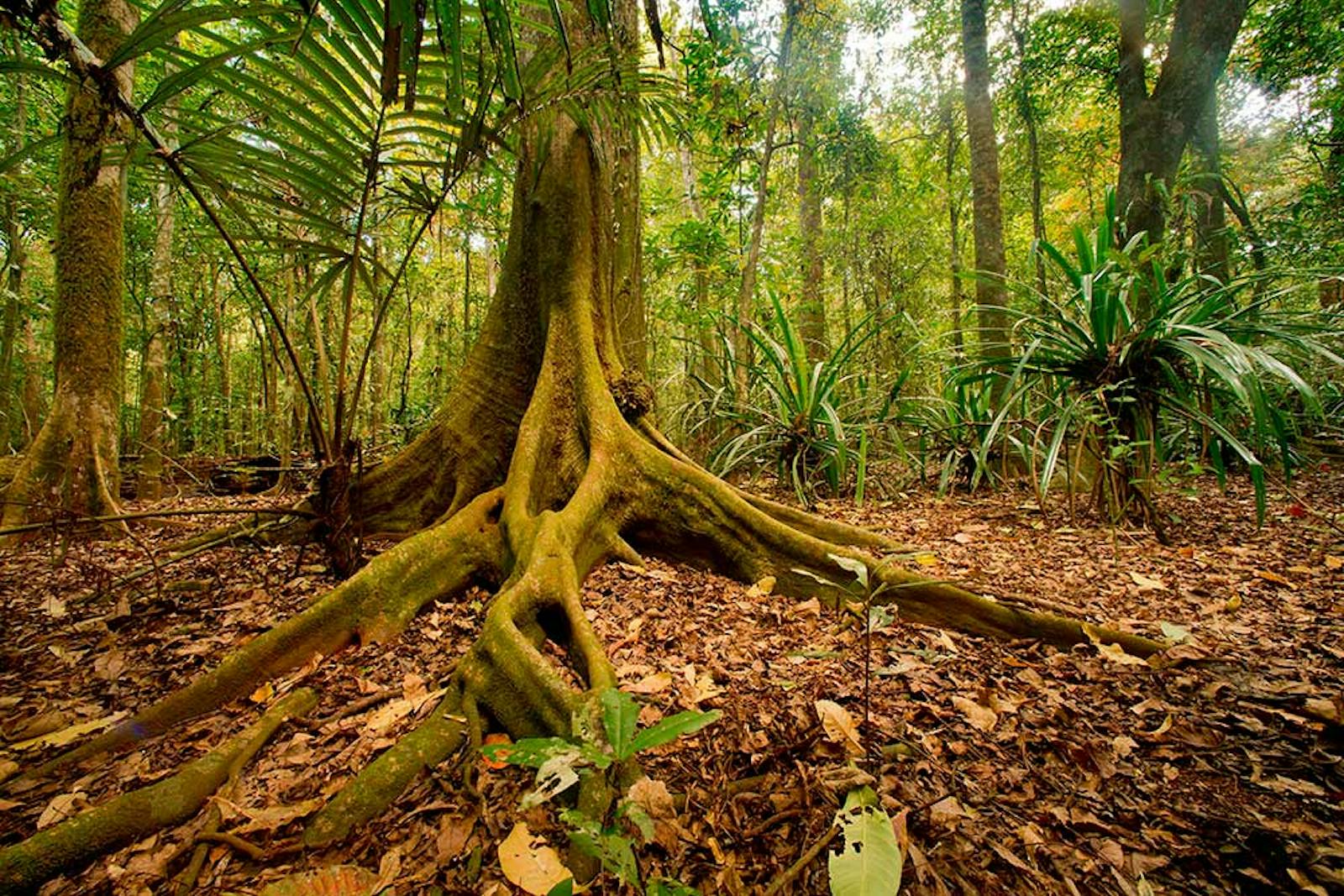Christmas and Cocos Islands Tropical Forests
The ecoregion’s land area is provided in units of 1,000 hectares. The conservation target is the Global Safety Net (GSN1) area for the given ecoregion. The protection level indicates the percentage of the GSN goal that is currently protected on a scale of 0-10. N/A means data is not available at this time.
Bioregion: Javan-Bali Tropical Rainforests (IM17)
Realm: Indomalaya
Ecoregion Size (1000 ha):
13
Ecoregion ID:
227
Conservation Target:
36%
Protection Level:
3
States: Australia administered territory
Christmas Island and the Cocos (Keeling) Islands are two peaks of ancient submarine volcanos that rise over 5,000 m from the Indian Ocean floor, now barely peeking out the ocean surface. Christmas Island was named on December 25th, 1643 by Captain William Mynors, Master of the ship Royal Mary of the British East India Company. The Cocos Islands, on the other hand, were named after the coconut palms on the islands.
Both islands sit isolated in the middle of the ocean; the closest large landmass is the island of Java, Indonesia, which is 300 and 1,100 km away from Christmas Island and Cocos Islands respectively. The islands of the ecoregion are also almost 1,000 km away from each other. This distance from a major landmass and the small size of the islands contribute to their depauperate flora and fauna, but also to the high levels of endemism. Only highly agile species, those that have been able to swim or ‘raft’ on floating objects, were able to colonize these remote islands. Once they arrived, the species evolved in isolation to become distinct from their mainland relatives.

The Christmas Island red crab (Gecarcoidea natalis) is the flagship species of the Christmas and Cocos Islands Tropical Forests ecoregion. Image credit: DIAC images, CC by 2.0
The climate is tropical, with salubrious temperatures of about 29ºC and relative humidity at 80%. The annual rainfall is about 2,000 mm, mostly during the northwest monsoon from December to April. The terrain on Christmas Island rises to 300 m as a series of stepped coral-limestone terraces. In contrast, the high point on Cocos Islands is a 9 m tall sand dune.
The forests on Christmas Island are dominated by Indo-Malayan and Melanesian tree species that form an evergreen canopy that reaches 30-40 m. Epiphytes are plentiful. The sparse understory is dominated by the endemic palm Arenga listeri and a screw pine, Pandanus elatus. Common canopy species are Planchonella nitida, Syzygium nervosum, Tristiropsis acutangula, Inocarpus fagifer, and Hernandia ovigera. In all, 237 native plant species are known from the island, and another 174 species have been introduced.
On Cocos Islands, most forests on the southern atoll have been replaced with coconut plantations, but the vegetation on North Keeling Island is fairly intact. Sheltered areas are dominated by Pisonia grandis that grows to 25 m, and are mixed with Laportea aestuans, Canavalia cathartica, and Erythrina variegate. Calophyllum inophyllum, Argusia argentea, Cordia subcordata and the endemic Pandanus tectorius cocosensis grow in more exposed areas.
One of the most spectacular natural events in this ecoregion is the migration of the Christmas Island red crabs, endemic to Christmas Island and introduced to Cocos Islands. During the rainy season, tens of millions of red crabs migrate en masse from their forest habitats to the breeding grounds on the beaches to lay eggs. When the eggs hatch a month later, the tiny, newly-hatched crabs make their way back to the forests.
Other than migrating crustaceans, both islands also support several endemic species. The Christmas Island hawk owl is one of the world’s rarest owls. Other endemic birds include the Christmas Island frigatebird, Abbott’s booby, Christmas Island imperial pigeon, and Christmas Island white-eye. An endemic rat, Rattus maclari, became extinct from Christmas Island at around 1900. Several endemic reptiles (e.g. Christmas Island Blind Snake, Lister’s Gecko, Blue-tailed Snake-eyed Skink, Sadleir's Bow-fingered Gecko, Christmas Island Whiptail Skink) and dozens of invertebrates have been described recently.
Most of the forests on Christmas Island are still intact, with 63% covered by a national park. But the forests outside are highly vulnerable to phosphate mining. These are important nesting habitat for birds, especially for Abbott’s booby. Old mines are left bare. On Cocos Islands, human disturbance and poaching of nests still threatens wildlife, although much of these activities is now controlled.
Recommended priority actions are to:
- Continue with the restoration of degraded areas.
- Continue active control of cat and rat populations.
- Strengthen the protection of bird nesting colonies, especially on North Keeling Island.
-
-
1. Adamczewska, A.M. and Morris, S., 2001. Ecology and behavior of Gecarcoidea natalis, the Christmas Island red crab, during the annual breeding migration. The Biological Bulletin, 200(3), pp.305-320.
2. Williams, D.G. 1994. Vegetation and flora of the Cocos (Keeling) Islands. Atoll Research Bulletin 404:1-29.
3. Christmas Island National Park Management Plan 2014-2024. 2014. Director of National Parks, Government of Australia. ISBN: 978-0-9807460-3-7 -
Cite this page: Christmas and Cocos Islands Tropical Forests. Ecoregion Snapshots: Descriptive Abstracts of the Terrestrial Ecoregions of the World, 2021. Developed by One Earth and RESOLVE. https://www.oneearth.org/ecoregions/christmas-and-cocos-islands-tropical-forests/
-



